INTENTIONAL CAMERA MOVEMENT
|
Whenever I discuss a particular photographic technique, I like to emphasize that all tools and techniques are inert - intellectually, emotionally, and spiritually. Creativity always resides in the person using them. For example, I use both a computer and a pencil and paper for writing; each has advantages and disadvantages. However, nobody assesses the value of my writing on the basis of which tool I've used and, for that matter, nobody knows the tool, except me. Having said that, craft is an important aide to art. When you experiment with new techniques, you may find one that enables you more effectively to express feelings or communicate ideas that matter to you. Then it becomes a matter of practise, practise, practise - to develop fluency. It's the same thing as gaining fluency in your first language and every other one you learn. Although intentional camera movement (ICM) is not as complicated as English, French, Polish, or Swahili, you'll find that there are so many possible kinds of camera movement that you could very easily become fluent in another language first. The
notes I'm providing with the photographs that follow are based on
my experience. Please treat them purely as guides. (I've shown two
or three of these images in previous letters.) You'll find the magazine
www.icmphotomag.com
and StephJohnPhoto.com
very helpful. But, be careful; there are two photographers named Stephanie
Johnson. The other one is into drag racing. |
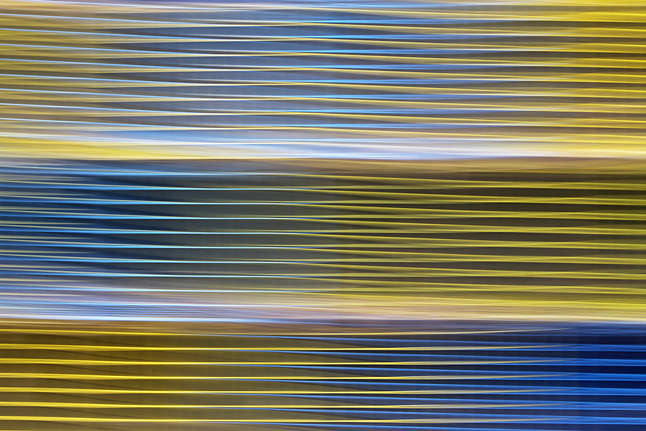
Using
a shutter speed of 1/4 to 1/8 sec., I moved my camera horizontally (either
left to right or right to left) to emphasize the horizontal threads
of a lobster pot. The result is a composition of three equal-sized rectangles
with both the overall composition and each rectangle having a strongly
rhythmic internal structure. |
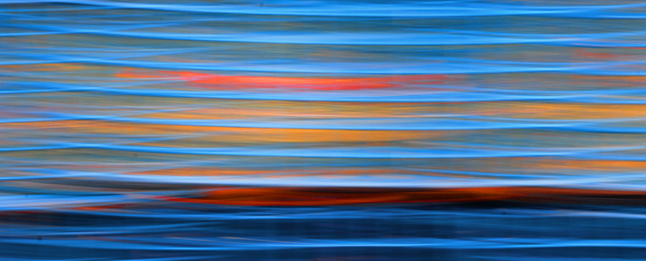
Variation on a theme using another lobster pot. Remember that both the shutter speed you choose and
how swiftly you move or swing the camera affect the result. That's why no two images will be the same.
|
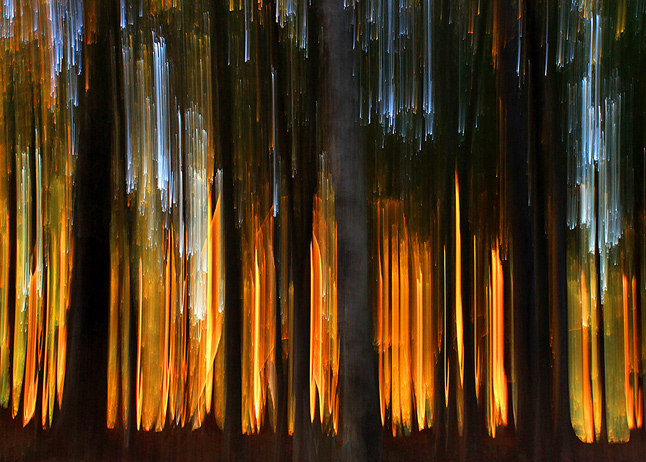
Because the trees and the spaces between them were essentially vertical, I moved the camera vertically to
enhance the natural design. I repeated this composition many times, using both longer and shorter shutter speeds, moving my camera quickly or more slowly, sometimes moving up, sometimes down, and sometimes both. Finally, I chose the three or four images that came closest to conveying the wonder I felt as the setting sun lit up part of a forest. I achieved this feeling more effectively than with a literal, documentary photograph.
|
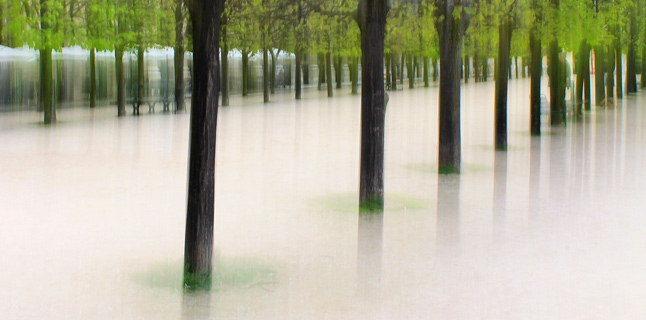
The effect of the very formal planting changed as I walked about and I came to feel a strong sense of unreality, almost surreality, which I endeavoured to convey using the same ICM as in the preceding image. The movement transformed the white gravel into a mirror of glass or ice that dimly reflects the trees above. It was my feeling of unreality that led me to try the technique; the feeling came first. |
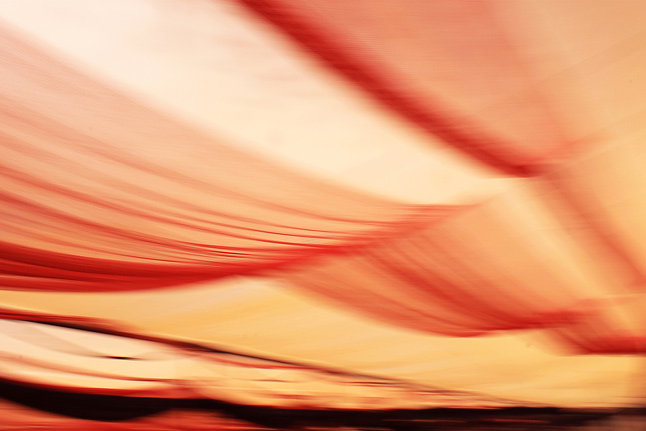
From where I was standing the great billows of fabric were sweeping upward in an oblique direction, so I followed the direction of the lines, exactly as I did in all the preceding images. |
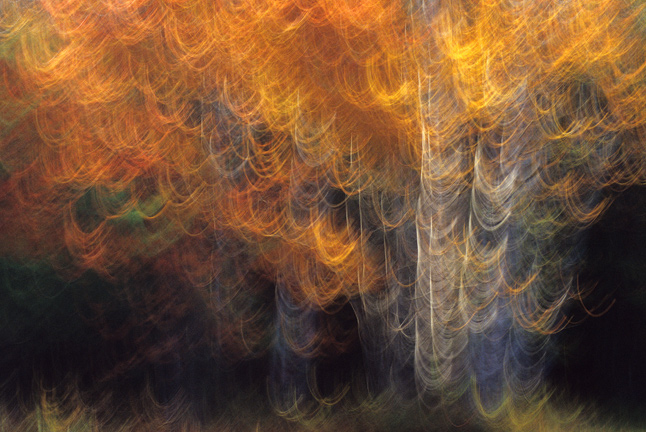
This composition and the next one are identical, except for my ICM. Both were short quick curved
movements at about 1/5 sec. These two "tries" of about 15 attempts were my favourites.
|
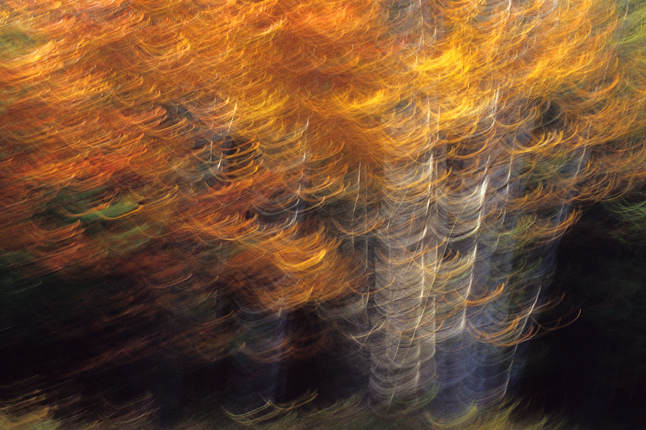
|
|
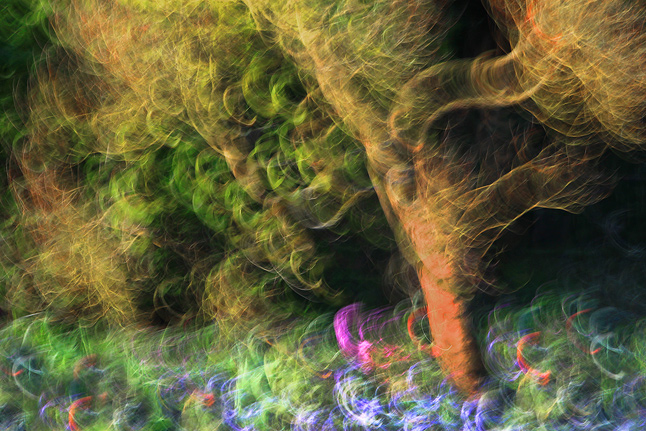
This is the same basic ICM that I used for the two previous images, but in a different situation. I always compose the image carefully before I make the quick movement. |
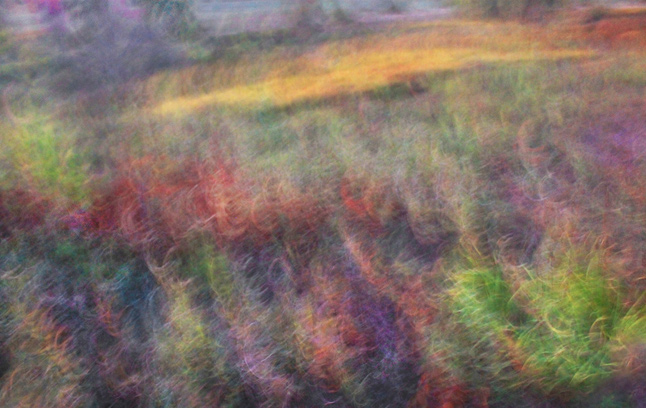
The same movement, but with a longer lens than in all the preceding photographs. The best way to discover
how a particular length of lens can affect movement is to go out and practise repeatedly.
|
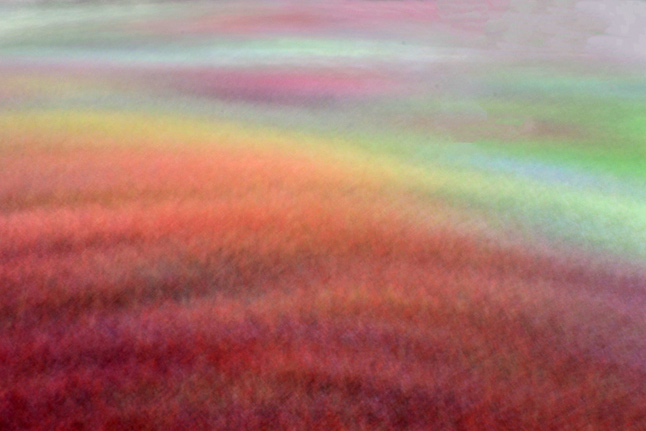
A wild blueberry field in autumn may display enormous colour variation that stimulates a strong emotional reaction in me. Here I used a wide-angle lens and swept rapidly with a curving ICM over considerable distance.
My objective was not to document what I saw, but what I felt.
|
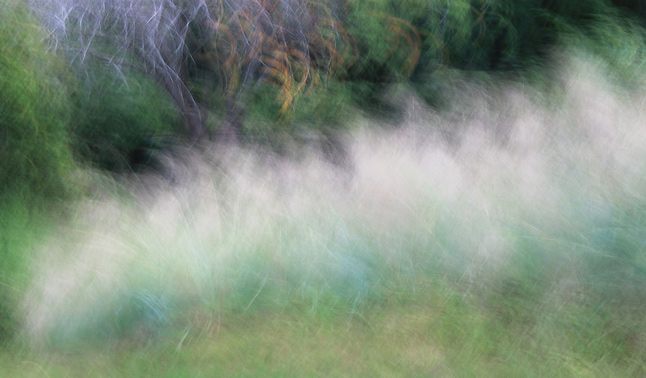
By
observing the short curving yellow lines, you can determine the direction
and distance of movement and the probable shutter speed I used to enhance
the fluffiness of a line of white grasses. |

I composed this image in Claude Monet's garden with great care and wanted to add very, very slight
movement to produce a subtle shimmering impression. I feel that I succeeded on my 79th attempt.
|
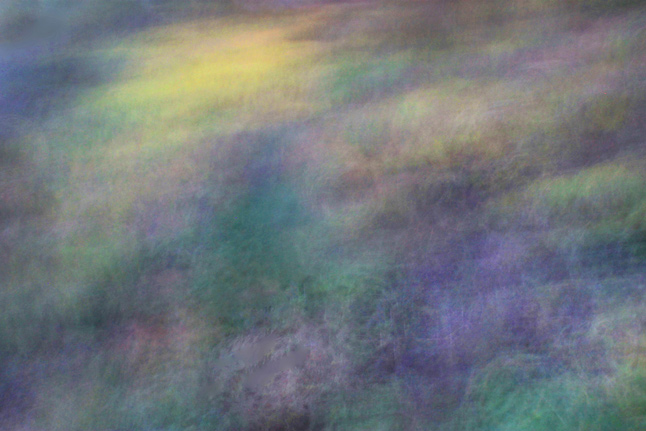
At other times I'll compose a scene, usually with a long lens, and handhold my camera for anywhere
from five to thirty seconds, allowing natural body movement to mix tones and hues. Then I'll gauge
if the effect is what I had hoped. (To tell the truth, I've even hand-held on a composition for 10 minutes. Nothing ventured, nothing gained!)
|
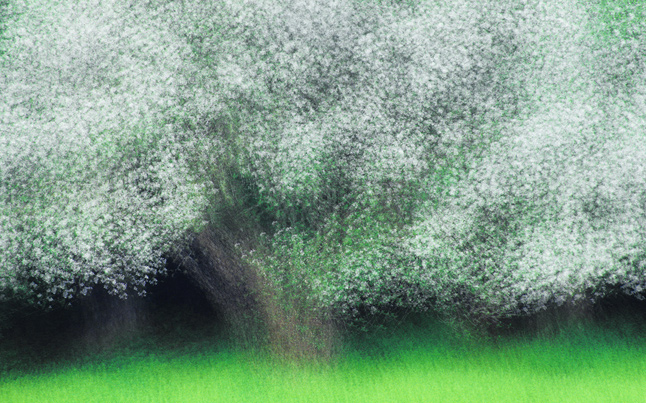
Most multiple exposures involve ICM - a little or a lot. My camera movement between exposures here was slight.
I used a film camera, as it was easy to make an unlimited number of exposures, probably 16-20.
|
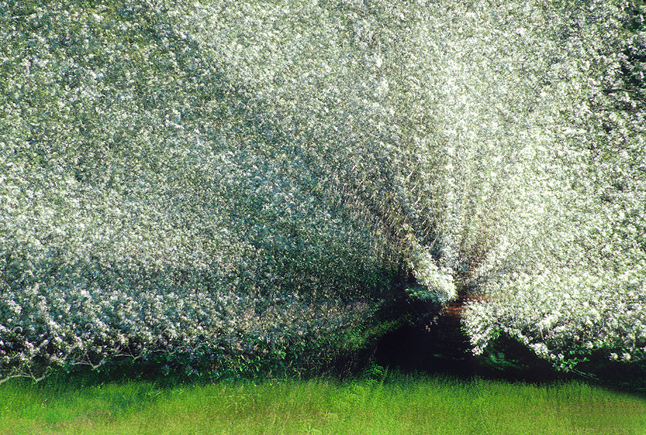
Same tree, 16 exposures; In this case I chose a tiny black hole with a short, faint reddish line under it as a fixed point. (This is the place from which all the lines seem to emanate).Then, I made my overall composition with a 100-300mm lens with the lens set wide for the first exposure. For each subsequent exposure I zoomed slightly closer (let's say from 110mm to 116mm, 121,mm, 130mm, 134mm, 141mm, and so on) and at the same time I made certain to place my fixed point back at its original spot in the composition before I released the shutter. That tiny spot is the only part of the image that was not moved during the series of exposures. |
![]()
The next two images are the result of sheer play. I was "making mud pies," so to speak. Play is essential to learning, which is why the more a species has to learn, the longer its childhood. I made the movement entirely with my camera for both images, then increased contrast substantially in the computer and cropped as well. You can try to guess the very ordinary subject matter, but why bother? The images you see are just as real, just as much "created" as everything else that exists. |
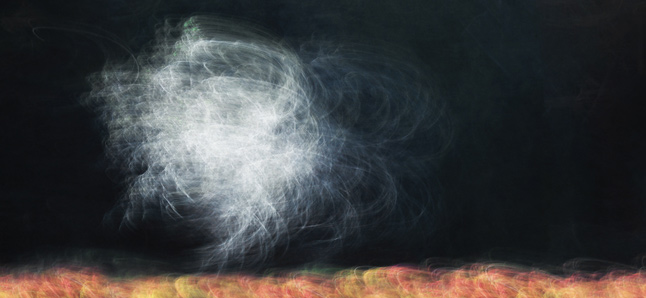
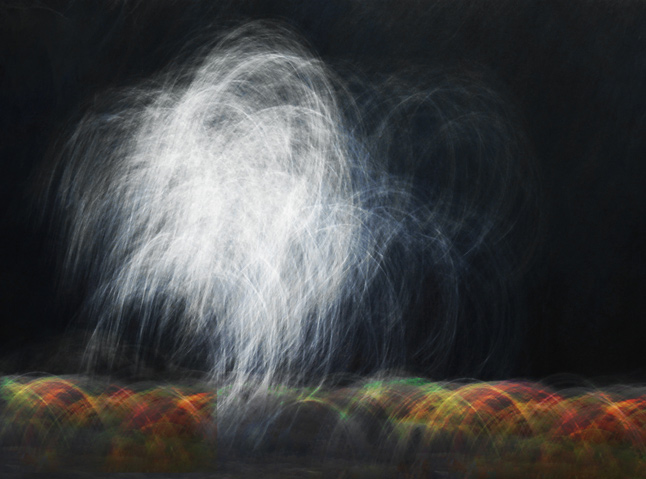
Images and Photographs © 2019 Freeman Patterson - All Rights Reserved.